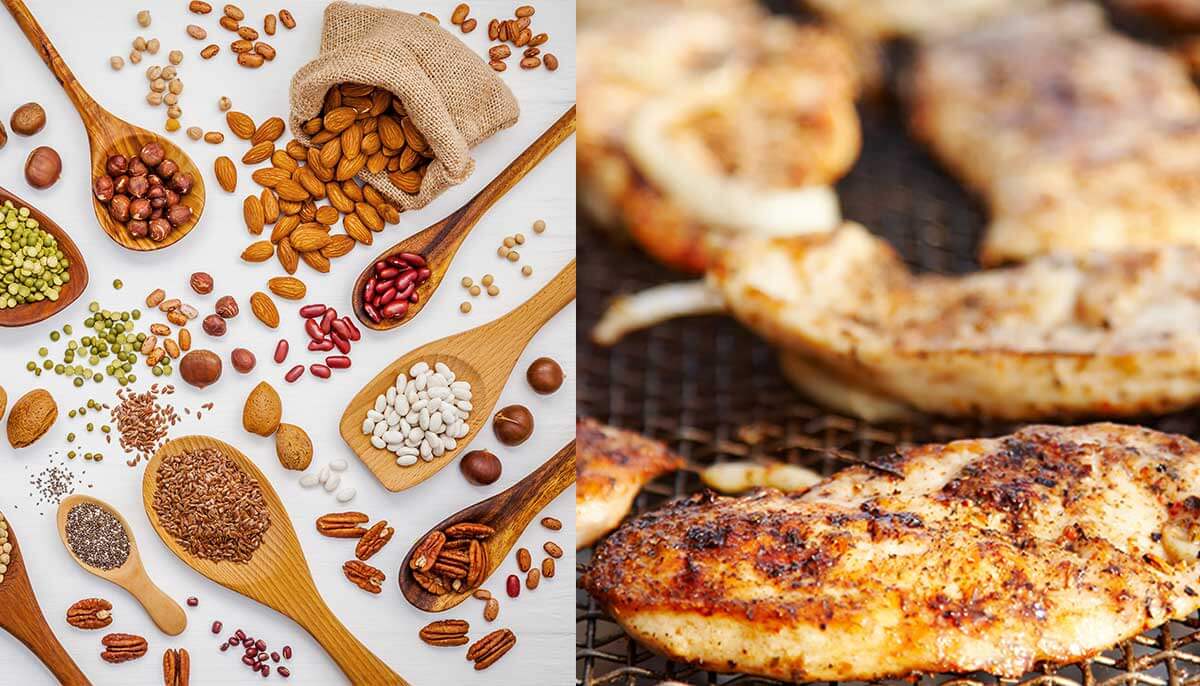What are the benefits of protein foods in a healthy eating pattern?

The Protein food group is made up of a variety of protein-rich foods, including meat, poultry, fish, beans and peas, eggs and nuts and seeds. In addition to protein, these nutrient-rich foods include B vitamins, zinc, iron, vitamin E and Fiber.
Protein foods like dried beans and peas are inexpensive sources of protein, while meat and poultry are versatile in the way they can be used. Many lean meats like beef chuck are economical while also being lower in fat. Though dairy foods have their own category, they are another source of high-quality protein. Yogurt contains all nine essential amino acids in the proportions needed for protein synthesis.
| Daily Recommendation | ||
| Age | No. of servings* | |
| Children | 2–3 years | 2 ounce equivalents |
| Children | 4–8 years | 4 ounce equivalents |
| Girls | 9–18 years | 5 ounce equivalents |
| Boys | 9–13 years | 5 ounce equivalents |
| Boys | 14–18 years | 6.5 ounce equivalents |
| Women | 19–30 years | 5.5 ounce equivalents |
| Women | 31+ years | 5 ounce equivalents |
| Men | 19–30 years | 6.5 ounce equivalents |
| Men | 31–50 years | 6 ounce equivalents |
| Men | 51+ years | 5.5 ounce equivalents |
*An ounce equivalent of protein is equal to 1 ounce of cooked lean beef, pork or ham; 1 ounce of chicken or turkey; one egg; 1 tablespoon of peanut or almond butter; or ¼ cup of beans.
The protein in meat, beans and nuts functions as a building block for bones, muscles, cartilage, skin and blood. Protein is also the building block for enzymes and hormones.
Other important nutrients that can be found in protein include:
Find out more about the relationship of a healthy eating pattern and activity to overall health by visiting the Healthy Eating page. For online learning activities, check out the nutrition resources for online learning page.
Kristal Shelden, RDN, discusses protein quality + food types that offer the highest quality.
Watch hereLearn more about the next food group.